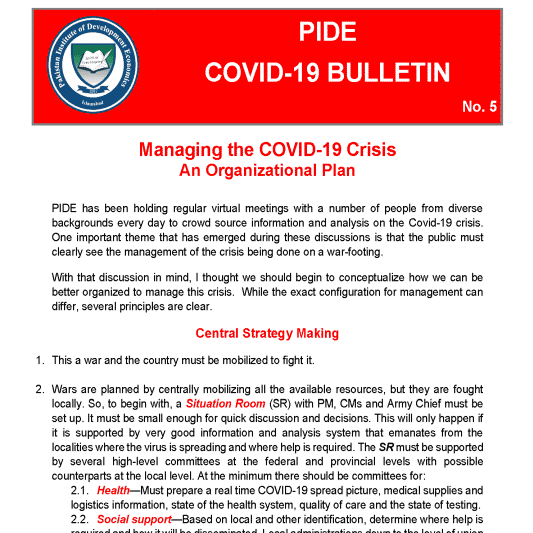Managing the COVID-19 Crisis An Organizational Plan
PIDE has been holding regular virtual meetings with a number of people from diverse backgrounds every day to crowd source information and analysis on the Covid-19 crisis. One important theme that has emerged during these discussions is that the public must clearly see the management of the crisis being done on a war-footing. With that discussion in mind, I thought we should begin to conceptualize how we can be better organized to manage this crisis. While the exact configuration for management can differ, several principles are clear. Central Strategy Making 1. This a war and the country must be mobilized to fight it. 2. Wars are planned by centrally mobilizing all the available resources, but they are fought locally. So, to begin with, a Situation Room (SR) with PM, CMs and Army Chief must be set up. It must be small enough for quick discussion and decisions. This will only happen if it is supported by very good information and analysis system that emanates from the localities where the virus is spreading and where help is required. The SR must be supported by several high-level committees at the federal and provincial levels with possible counterparts at the local level. At the minimum there should be committees for: 2.1. Health—Must prepare a real time COVID-19 spread picture, medical supplies and logistics information, state of the health system, quality of care and the state of testing. 2.2. Social support—Based on local and other identification, determine where help is required and how it will be disseminated. Local administrations down to the level of union councils and political representatives will help identify the community needs. Various social safety net agencies, like BISP, Bait ul Mal, NRSP and PPAF, will help in this effort. 2.3. Law and order—Police and army will maintain law and order, and identify the needs and plans to move forward. 2.4. Economy—Real time resource availability and utilization information, and daily required changes of expenditure based on health and social support requirements.




